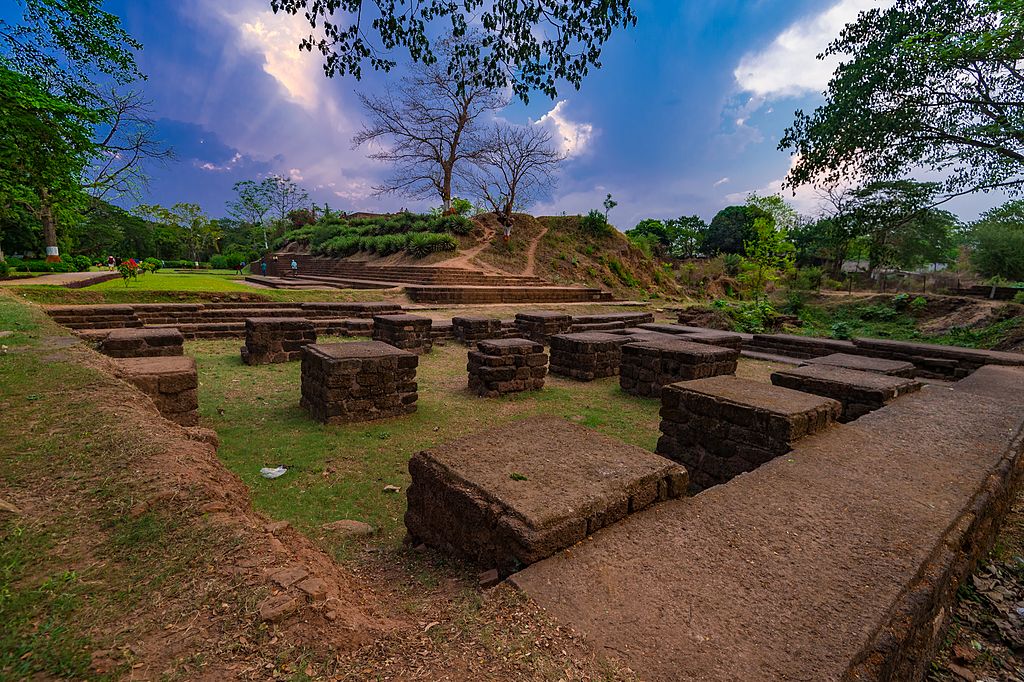The Barabati Fort which is located in the west side of the millennium city of Cuttack is one of the most sought tourist attractions of Odisha. This ruined fort was built by the Ganga dynasty near the banks of Mahanadi. The fort which is spread over an area of 102 acres, is now protected by Barabati Fort the Department of Archaeological Survey of India.
Historical Significance:
It is believed that the Barabati Fort was once house to a nine-storey palace. But today, the ruins of the palace can only be witnessed. While building the embankments on the shore of Mahanadi in order to protect the city from floods, King Marakata Keshari constructed the fort in 989 AD. It was subsequently followed by the construction of the nine-storey palace by Chalukyan King, Mukundadev Harichanadan in 14th century. The fort is the silent witness to the rise and fall of many dynasties such as the Afghan, Maratha, Mughal and British. Dimensionally, the fort is 2150 ft in length and 1899 ft in breadth.
The remains of the fort suggest that it was built of khondalite stone and has a citadel wall built with laterite blocks. Additionally, remains of a temple have been excavated here. Upon excavation, 32 pillars like sentinels also built of laterite blocks were found standing along the fort. The 102 Barabati Fort acres of is still guarded with several stone gates, bastions and ramparts till date.
As per the theories of great many historians, in 1568 AD, Cuttack passed to the hands of Afghan rulers of Bengal, the Moghul Empire in 1592 and subsequently the Marathas in 1751. Cuttack, along with other parts of Odisha, came under British rule in 1803.
It was King Mukunda Deva during whose reign Barabati prospering the most. Abul Fazl, the famous historian of Emperor Akbar’s court visited Odisha during late 16th century. He has mentioned about the fort & the nine storeyed building in his work titled ‘Ain-i-Akbari’ in which he has state that Kataka (the then name of present Cuttack) the city has a stone fort situated at the bifurcation of two rivers namely Mahanadi and Kathajodi. The nine storeys were utilised as follows: the first storey (elephants and stables), second (artillery and guards), third (patrols and gate keepers), fourth (workshop),Barabati Fort fifth (kitchen), sixth (public reception), seventh (private apartment), eighth (ladies chambers) and ninth (chamber of governoror the king).
Historians also believe that Kalapahada, the general of Sulaiman Khan Karrani of Bengal after invading Barabati fort didn’t plan to damage the Nabatala Prasada. It was in immediate exchange of huge financial properties from the wife of King Mukunda Deva.

English traveller William Bruton who visited Barabati with Ralph Cartwright in 1633 got amazed with the magnificence and pomp of the stately court. He called the Fort as Malcandy (as it was greatly influenced with the works of King Mukunda Deva).
Sadly the fort was plundered for stone during the reign of the British Empire by the local public works department. A lot of stone was used for public works like roads and a light house in Cuttack. It had already been damaged heavily by the bombardment of British forces during the capture of the fort in 1803. The Cuttack Magistrate, Mr Shore put a stop to the stealing of stones in 1858 but by then the damage had been done.
You can read our another post on The Leaning Temple of Huma: A Unique Architectural Wonder
Structures of the Fort
There is a tank to the west of the mound. Presently, in the north-eastern corner of the mound are remains of a temple, constructed of whitish sandstone laid over the foundations of bulky laterite blocks. Till date, the recoveries include about four hundred fragments of mouldings and some mutilated pieces of sculptures. While a mosque built by Nawab Murshid Quli Khan, the then governor of Emperor Aurangzeb in 1719 AD still exists till date, a temple of the Ganga period containing a stone idol of Lord Jagannath remains in ruins.
Today the Barabati fort sits next to the state of the art Barabati Stadium, the one stop destination of various sport events and cultural programs in Odisha. A temple dedicated to Katak Chandi, the presiding deity of the city, not far away from the fort also lies in close proximity to the fort.
Nearest Places to Visit
Dhabaleswar
Dhabaleswar is one of the attractive and small islands on the banks of Mahanadi River. One can visit this place through the boat or through a hanging bridge over the road to reach the place the temple of Lord Shiva with the stairs up to the temple.
Udayagiri-Ratnagiri-Lalitgiri
These trio of the hills, is also among the most beautiful at its natures and shows the sculptures of the Lord Buddha era. One can plan a visit to this majestic place.
Chowdwar
A city near to Cuttack, Chowdar is among the the most common picnic spots on the bank of Mahanadi. In Chowdwar, one can pick many places for recreation.
Best Time to Visit
The best time to visit Barbati Fort is around mid-January to mid-March when the cool breeze is sufficient enough for a pleasant trip.
How to Reach
The Barabati fort is one of the main tourist attractions of Cuttack. The fort which is present on the west side of the city at the bank of Mahanadi River is about 8 km far from the Cuttack.
By Air: Bhubaneshwar International Airport is the nearest airport to reach the Barabati Fort.
By Rail: Cuttack Railway Station is the nearest railway station to reach Barbati fort. One can hire local taxis and tourist buses to reach the destination.
More: Wanted to download Odishashop.com visit here
By Road: Cuttack can be reached through the road passage via major cities like Konark, Kolkata, Puri and Bhubaneshwar.

